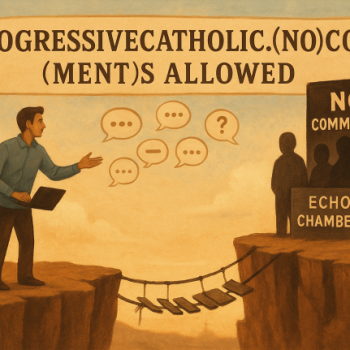GODSTUFF:
YOU DON’T HAVE TO BE A SAINT TO BE A SAINT
For most of my life, I haven’t had much use for saints. At least not the ones that appear on little medals or on prayer cards at funerals.
I do, however, fondly recall as a little girl stopping in front of a statue of St. Theresa to look at her young, holy face, the flowers in her hands. To smell the incense, take the long match from my father to light the candle, and hear my mother explain that my grandparents gave her the middle name “Theresa” after the young saint.
A few years later, when incense and candles were replaced by hymn sings and ice cream socials as my family immigrated from Roman Catholicism to Protestantism, saints became confusing strangers.
We weren’t supposed to pray to them because that was idolatry, my new Sunday School teachers said. And when our pastor talked about “saints,” he meant us — all Christians — just like St. Paul did when he said, “Greet the saints in Corinth.”
Still I continued to wonder who these other saints with capital S’s were and whether they were really that different from the rest of us.
When the Rev. James Martin’s book My Life with the Saints landed on my desk a couple of months ago, I nearly dispatched it to the “no thanks” pile when something about the cover illustration seized me. The 10 saints on the dust jacket looked real. Like actual people.
People I might know.
And that is precisely the point of Martin’s book, a memoir, really, of the 45-year-old Jesuit priest’s own spiritual life, and the saints (some of them officially canonized by the Vatican, some not) he says have shaped it.
Martin, who spent a few years in Chicago in the mid-1990s studying at Loyola University and working with street gangs around Cabrini-Green, makes these capital-S saints feel as real as the lower-case saints who sang “The Old Rugged Cross” off-key in the pew next to me growing up.
Most Catholics, Martin explains, think of saints as patrons whom they ask to intercede (i.e. pray) on their behalf with God. It works a little like spiritual clout.
But Martin prefers to think of saints as companions.
“That’s actually the model that dominated in the early church,” he said, “the saint as the one who accompanies us, who gives us an example, who’s sort of walking alongside us.”
OK, Father Jim, what makes a saint a saint?
“My theory is that a believer can look back on his life and see those moments where God [intervened]. And I think a saint is a person who can see those moments when they’re happening,” he said. “The theme of the book really is Thomas Merton’s quote, ‘For me, to be a saint means to be myself.’
“That’s very difficult for us to accept. It’s hard for us to see our own goodness, our own holiness. . . . The saints are imperfect, too. That strikes people as sort of heretical because what we’ve done is we’ve tamed them. And, boy, to tame someone like Francis of Assisi is quite a trick. But we’ve turned him into this sort of non-threatening hippie who talks to birds. That’s why we could feel comfortable putting him in our garden because, ya know, he’s so adorable. Like a puppy.”
That’s not the St. Francis whom Martin knows. The one he thinks of is the guy who walked closely with God, yes, but who also had a temper so hot that he once ripped the roof off of a building in a fit of self-righteous pique.
Mother Teresa, who has been beatified and surely will be canonized, was bossy and at times plagued by doubt, he said.
And then there’s Dorothy Day, the “saint” I found myself drawn to in Martin’s book; a woman who made it known in no uncertain terms that she wasn’t interested in being considered saintly. I think she yelled it, actually.
“Don’t call me a saint!” Day said. “I don’t want to be dismissed that easily.”
Day was a journalist, a trouble-maker, and a Chicagoan for part of her life. She is perhaps best known for founding the Catholic Worker newspaper and for her tireless (and unapologetically feisty) work on behalf of the poor and oppressed.
A reluctant and unlikely saint, for the first portion of her life, Day was a real hell-raiser. She drank too much, slept around, shacked up with a guy, had an abortion, and even was (mistakenly) arrested for being a prostitute at a flop house. After she became pregnant a second time and decided to keep the baby (her daughter Tamar Theresa), Day had a spiritual awakening, embraced God (and eventually Catholicism), and set about doing God’s work for justice and peace.
She died in 1980, and in 2000, the New York archdiocese launched the official campaign to set Day on the road toward canonization. Somewhere in heaven there’s one cranky saint-to-be.
“Can you imagine someone putting a statue of Dorothy Day in their garden?” Martin laughed. “Ooh, she’d be mad.”
In his chapter about Day, Martin describes a photograph of her — the first image he recalls seeing of her — walking through the woods, a cheap black stocking cap pulled down over her white hair, hands thrust deeply into the pockets of her worn tweed coat.
Day doesn’t look solemn, beatific, or rapt in spiritual ecstasy. The woman once described as a “tough old bird” appears pensive, like she was on her way to do something. Martin believes she was in the woods to pray. Perhaps. Or maybe she was on her way to have a smoke and a few moments of solitude.
“Something of the saint’s situation is communicated by what she wears,” Martin writes. “Something of her soul is communicated in her face. And something of her message is communicated in her gaze.”
Martin says Day “stands for those who think themselves too damaged or sinful to do anything meaningful for God.”
So, if anyone knows where to find a statue of Dorothy Day for sale, please give me a shout. I promise not to put her in a garden.
But I will keep her in the newsroom, next to my keyboard, where divine intervention is always a welcome turn of events.
Copyright © The Sun-Times Company
All rights reserved. This material may not be published, broadcast, rewritten, or redistributed.















